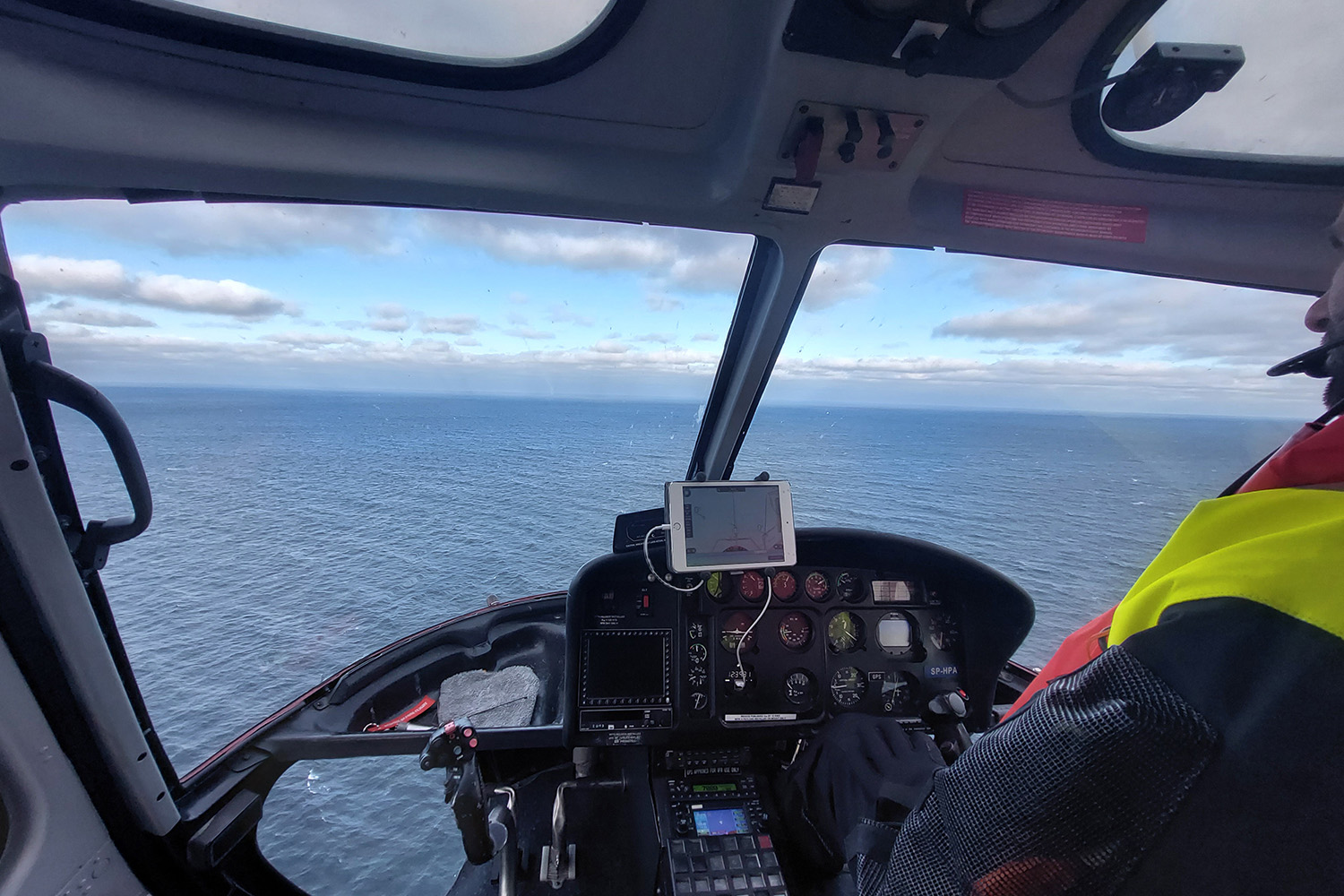Methane above the Baltic Sea Further successful atmospheric methane measurements above the Nord Stream leaks
The first helicopter measurements of methane concentrations over the Baltic Sea in October 2022 showed that elevated methane was not only measured directly above the leaks in the Nord Stream pipelines, but over a larger area. Regular ship measurements by the Institute for Baltic Sea Research in Warnemünde as part of the European ICOS project indicated that methane concentrations in the water were still elevated over a longer period of time. Against this background, the Institute of Flight Guidance of TU Braunschweig, together with the Institute of Atmospheric Physics of the DLR, again carried out measurements with the helicopter towed probe HELiPOD in November 2022.

Methane measurements by helicopter over the Baltic Sea: with a data link you can see directly what the HELiPOD is measuring below. Photo: Falk Pätzold
On 16 and 17 November 2022, the HELiPOD was used for renewed measurements: with scientists from TU Braunschweig and DLR, two measurement flights were successfully carried out from the Polish airfield in Kołobrzeg. The HELiPOD is equipped with many different measuring instruments. In addition to the meteorological parameters wind, temperature and humidity, it measures the concentration of methane, carbon dioxide, ozone and particles in the air.
“Flight planning at this time of year is difficult. Often predictions over several days are not reliable, especially when it comes to clearing fog. Therefore, we are very happy that the measurements worked out and that we now have another very interesting data set,” reports Dr. Astrid Lampert from TU Braunschweig.

Staff members of TU Braunschweig and DLR put the HELiPOD into operation before a measurement flight. From left to right: Andreas Schlerf, Paul Waldmann, Eric Förster. Photo: Falk Pätzold
This enthusiasm is also shared by Julia Marshall of the DLR Institute of Atmospheric Physics: “The evaluation of the first flight data was already very exciting. The spatial distribution of the source area surprised us. We are looking forward to the new data set to learn more about the release and distribution of methane from the Nord Stream leaks.” The DLR analyses the spatial distribution of the measured methane in the atmosphere and uses the inverse modelling method to understand the dispersion. TU Braunschweig is particularly investigating the composition of the measured methane – that is, the proportion of heavier or lighter molecules, the so-called isotopes, in order to gain clues about the origin of the methane.
Each methane source has its own “fingerprint”, which can be used to distinguish whether the methane comes from fossil or biological sources. Methane is a powerful greenhouse gas, and in order to limit climate change there are international agreements to record the amount emitted and to reduce it in the long term. Knowing the origin is of great importance for this.
The flight measurements in November were funded by a project of the German Research Foundation.
Author: Astrid Lampert
